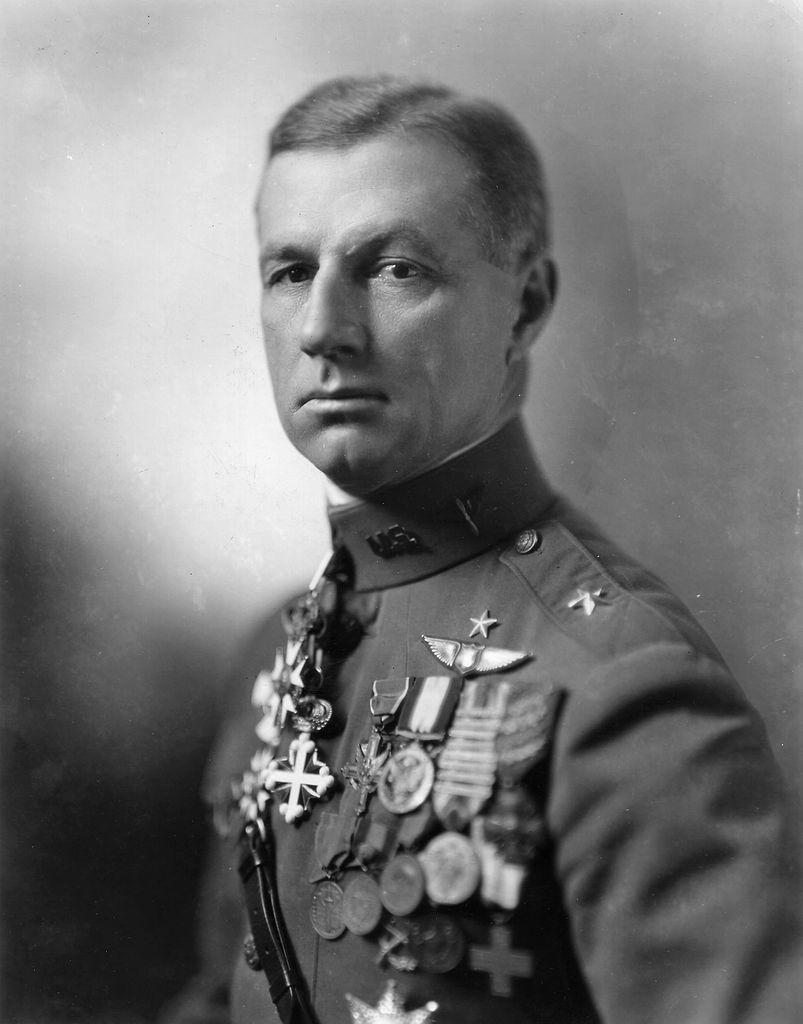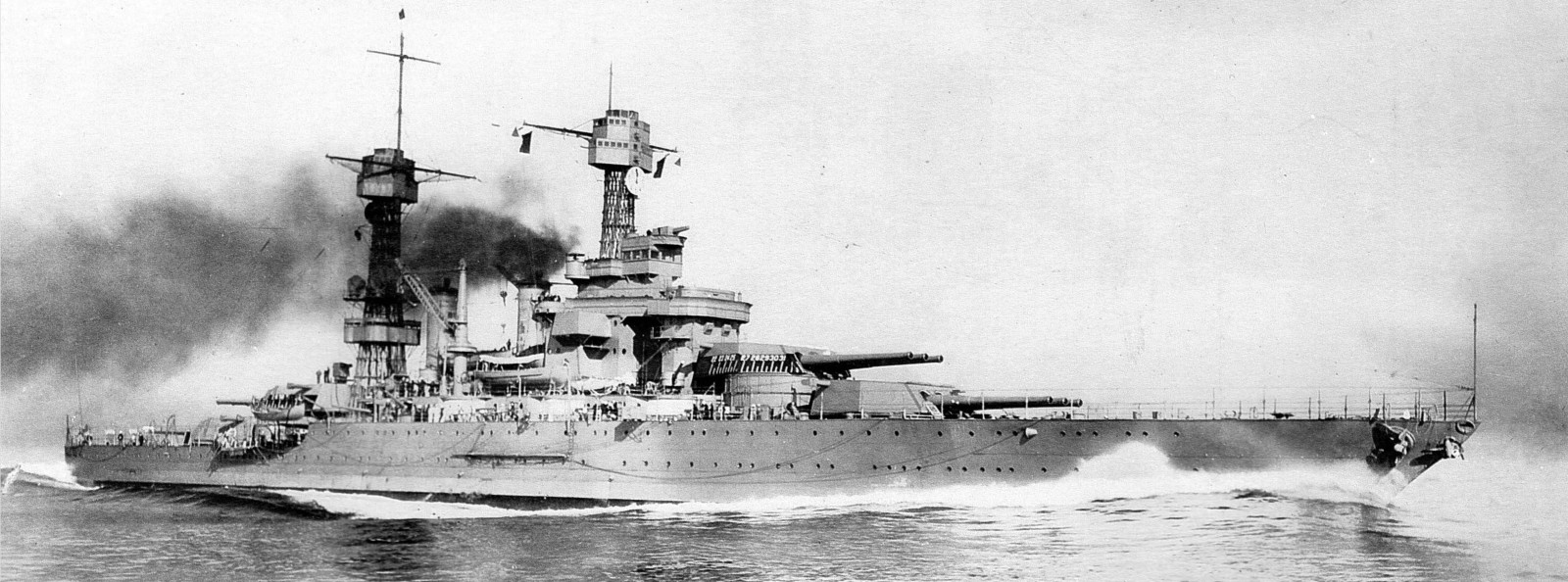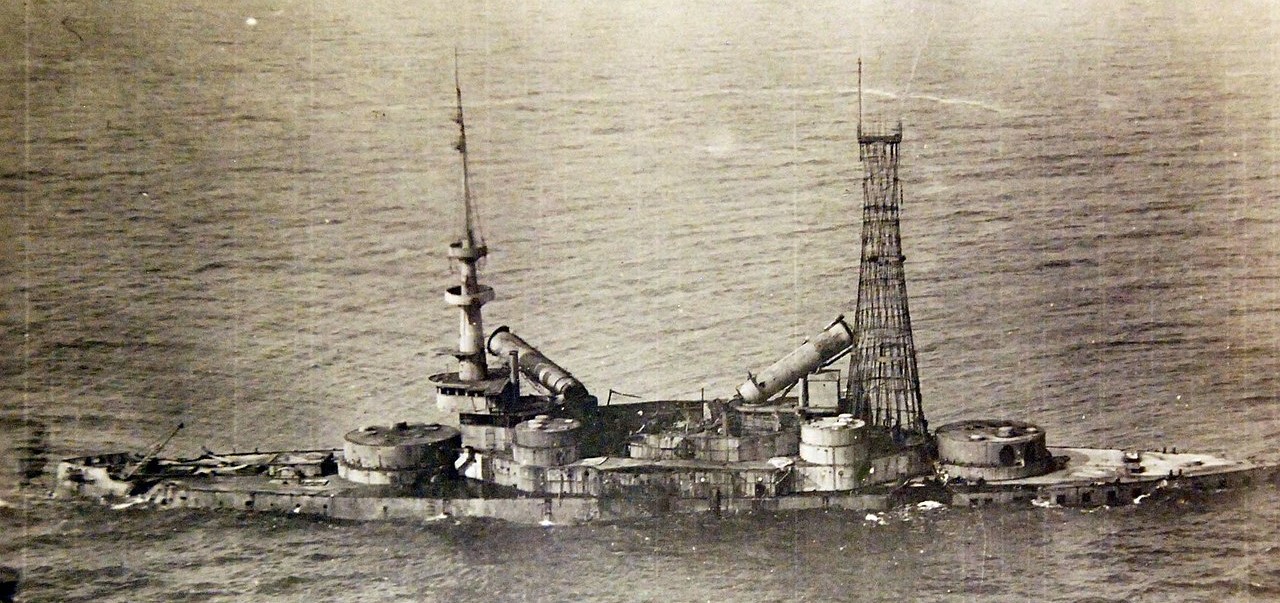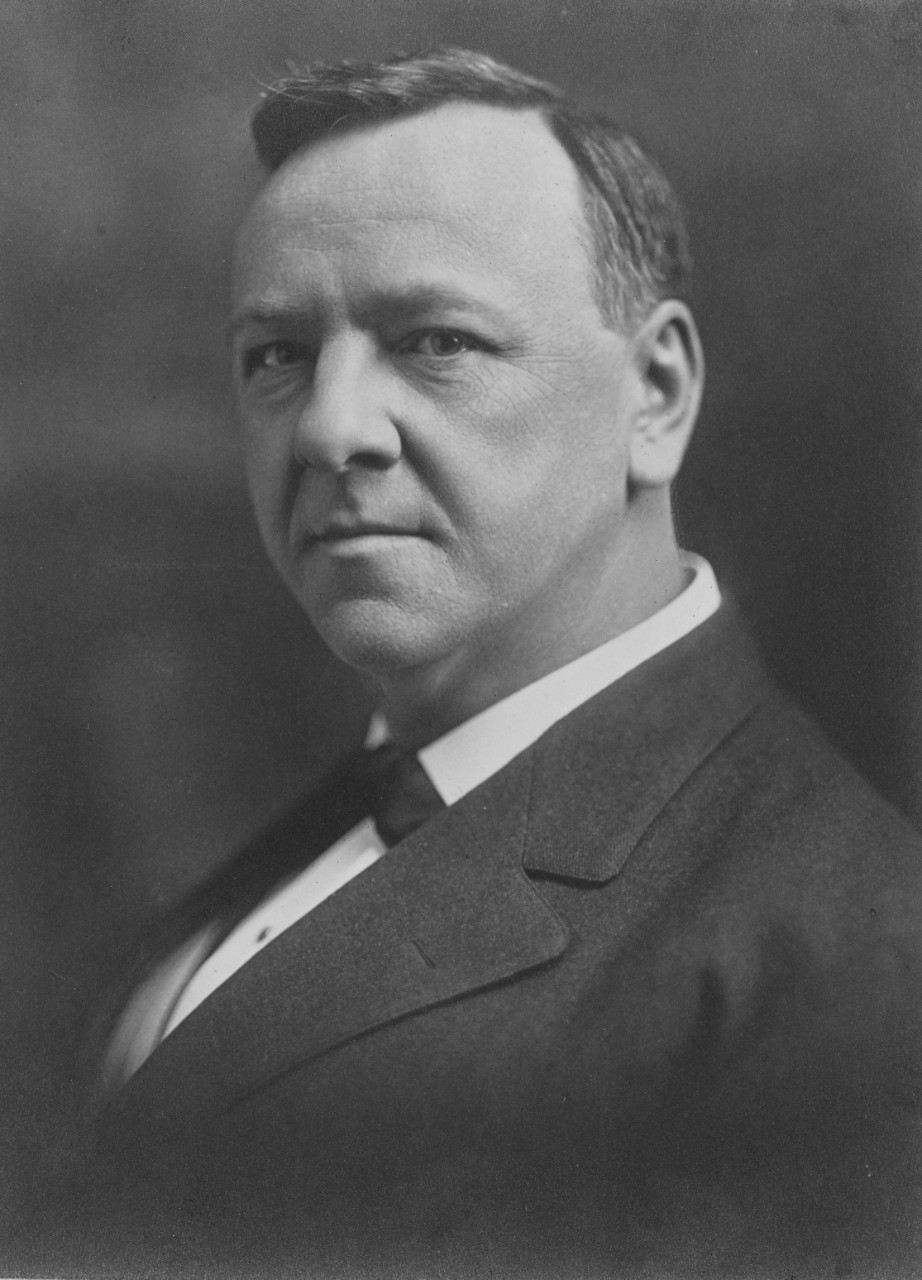Billy Mitchell is a controversial figure in the history of aviation and naval warfare. His claim that the airplane had rendered the battleship obsolete, and his relentless campaign to make the airplane the center of America's national defense, set off first great inter-service conflict. But how closely does the popular account match what actually happened in the early 20s? And was Mitchell right about the vulnerability of the battleship to air attack?

Billy Mitchell
Mitchell had joined the Army Signal Corps in 1898, and was one of the service's first proponents of the airplane. He took private flying lessons and ended up as the senior combat aviation commander in the American Expeditionary Force in France during WWI. Despite a number of personality clashes with other officers, he did an excellent job, flying numerous combat missions to see the ground his men would be fighting over and directing the largest single group of aircraft ever placed under a single command during the war. He expected to be rewarded with command of the Army's postwar air arm, and was bitterly disappointed when this did not come through. While in Europe, he became a devotee of the idea that the nation needed a unified air arm, on the model of the recently-founded RAF, and began to evangelize for this upon his return to the US.
This brought him into direct conflict with the Navy. Not only was he attempting to steal the Navy's air arm, which the USN rightly believed was an integral part of naval operations and needed to stay under naval control, but he also began to claim that air power had rendered the surface ship obsolete, a direct threat to the Navy's mission and budget in the postwar drawdown. Mitchell made a number of powerful allies, but also antagonized the senior figures in both the Army and Navy, and his plans died in Congress.

USS California, one of the battleships under threat from Mitchell's assault
At this point, Mitchell's difficult personality began to manifest itself in earnest. He had always been outspoken to the point of arrogance, and now his claims became increasingly grandiose, both to official bodies and in the press. He had seized upon coastal defense as his main cause, claiming that 1,000 bombers could be had for the cost of a battleship, and that the Army Air Services could sink any battleship afloat. Of course, his cost numbers were dubious at best, and the AAS had never so much as dropped a bomb on a ship of any sort. Unfortunately, Mitchell was an excellent speaker and writer, and began to gather public support through a press campaign, aided by the Navy's dismissive attitude towards publicity, which led to several own goals.1
Naval aviators had long ago realized the potential of the airplane as an anti-shipping weapon, and had managed to get permission to use the obsolete battleship Indiana, a veteran of the Spanish-American War, as a target. Mitchell was among those invited to observe the test, which first involved aircraft attacking the old ship with practice bombs. Only about 10% hit, even though the ship was anchored and not fighting back, a commendable figure for the day. Mitchell would later claim that the attacking pilots had no training, and the bombs had no fins, although this appears to be false. Then the Navy moved on to more destructive tests, setting off 14 bombs of various sizes, ranging from 200 to 600 lbs of TNT, in the water near Indiana to test the effects on her hull.2 The penultimate shot sprang a seam, and the ship began to take on water. Despite the best efforts of the test crew, Indiana's watertight integrity had been compromised when she was stripped, and she had to be beached to stop her sinking.

A photograph of the damage to Indiana from the 900 lb charge
This signaled the move to the second stage of the test, looking at the effects of bombs that actually hit the ship. One in particular, an 1,800 lb bomb loaded with 900 lb of amatol, was set off near the 8" barbette. This blew a hole in the main deck and did a great deal of damage to the superstructure. Mitchell, observing the damage, assumed that a bomb of this size could put out of action any battleship in the world, but in fact the damage to the nearby turret was slight, and Indiana would have been able to continue in action. The Navy correctly concluded that the experiment showed the resilience of a battleship to damage from air attack, but Mitchell took his campaign to Congress, claiming "All we want to do is to have you gentlemen watch us attack a battleship". His efforts there were thwarted by Josephus Daniels, Secretary of the Navy, who pointed out that "one might equally demonstrate the absolute supremacy of either the gun or the torpedo against a modern battleship by firing them against an ancient hulk... securely moored at anchor." Mitchell then took his case to the press, leaking photos of the test to the New York Tribune, where they caused an immediate public outcry.

Indiana beached after the test
The result was another set of Congressional hearings, where Mitchell and a number of senior Admirals were called to testify. The Navy men were unanimous in their support of aviation, but emphasized the need for naval aviation to remain as part of the Navy, while Mitchell asked for aircraft carriers, three of which would, according to him, be sufficient to protect the East Coast by themselves. When questioned about the difficulty of hitting a moving ship, Mitchell claimed that this would actually make things easier, as the main thing that made aerial bombing difficult was the difference in speed between the plane and the target. After this shocking demonstration of ignorance,3 he then stated that he had a force of bombers ready to attack a battleship as soon as the Navy would give him one. This was a lie, but neatly managed to turn the entire issue into a showdown over Mitchell's ability to sink a battleship, inadvertently aided by Secretary Daniels, who stated that he would be glad to stand on the deck of any battleship Mitchell attempted to bomb.4 The complexities of finding a ship a sea, hitting it while it was maneuvering and shooting back, and then actually doing enough damage to sink it, were pushed aside in the public eye by the growing confrontation between Mitchell and the Navy.

Josephus Daniels
Finally, in early 1921, Mitchell got his ships. The few ships of the German fleet which had not been scuttled at Scapa Flow were dispersed among the Allies, the US receiving the dreadnought Ostfriesland, the cruiser Frankfurt, and a handful of destroyers and submarines. They had to be destroyed or disarmed, and bombing trials seemed to be the perfect opportunity. We'll pick up the story there next time.
1 Once source I consulted said "I think that our Navy learned as much about publicity from those experiments as it did about bombing battleships." ⇑
2 They were not dropped, but set off remotely, because dropping them would have been too random for a weapon effects test. ⇑
3 It bears pointing out that the Army was so ignorant of how to bomb targets at sea that they ended up borrowing both bombsights and bombardiers from the Navy before the trials. ⇑
4 This statement was made with the implication that the ship would be underway and the bombing done from battle altitude, but was misrepresented by Mitchell's partisans in the press. Daniels never had to make good on his boast, as he left office with the Wilson Administration before Mitchell got his hands on the ships. ⇑

Recent Comments